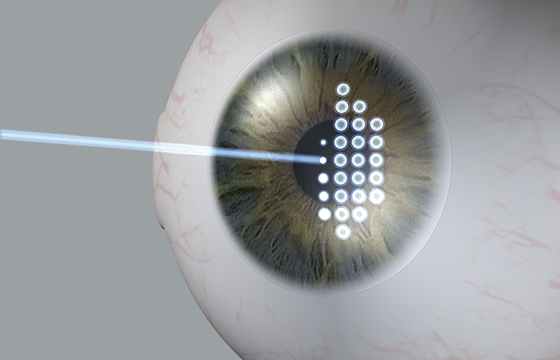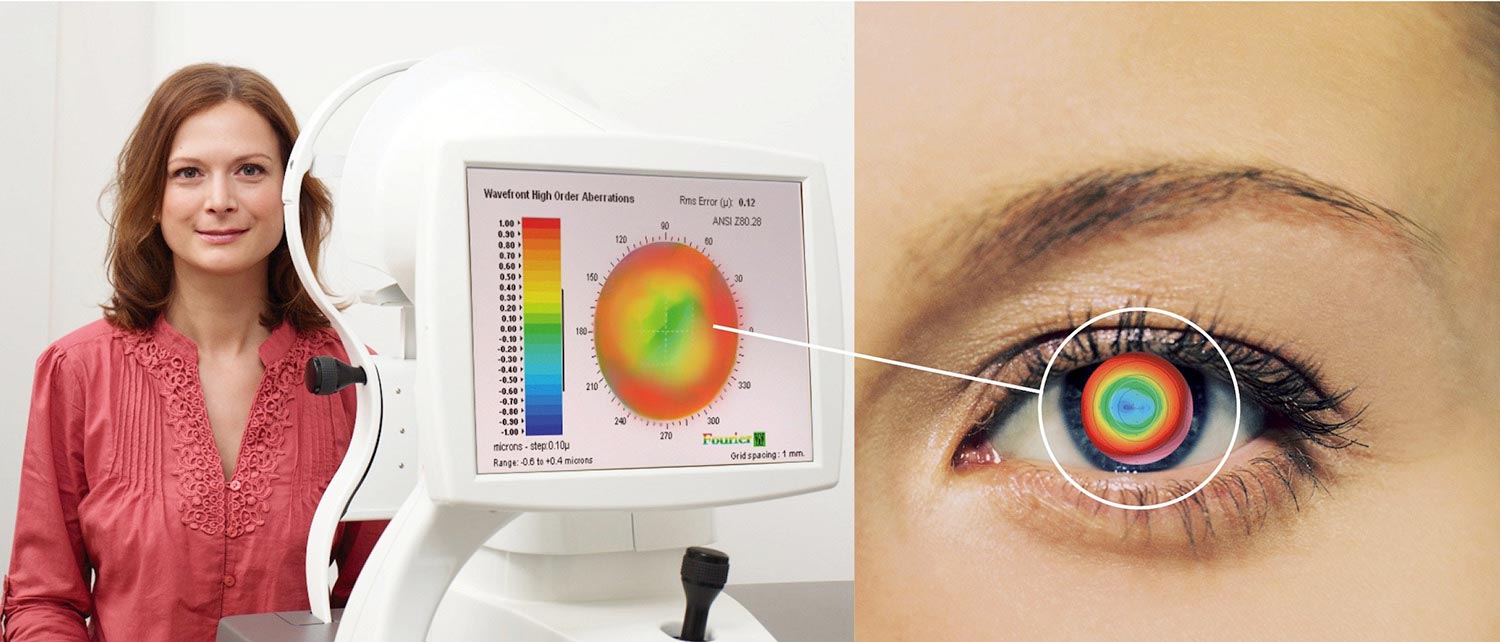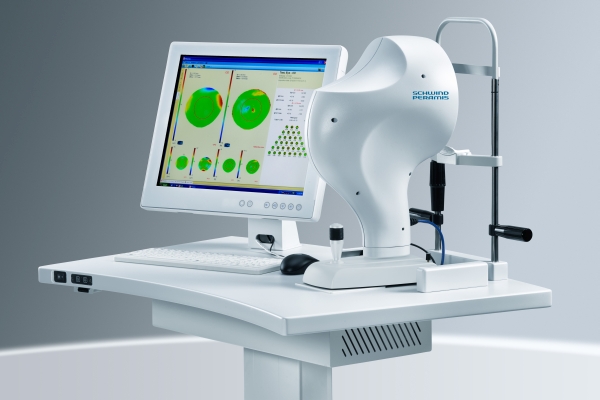FEMTOLASIK (intraLASIK or Bladeless LASIK)
Advances in laser vision correction include femtoLASIK (aka intraLASIK, also known as bladeless LASIK). A small flap is created in the front portion of the cornea using a specialized femtosecond laser instead of the traditional micromechanical blade system. Small laser bubbles are created and the surgeon later connects them, hence creating a flap. FemtoLASIK has same visual results as LASIK with mechanical flap, but offers increased safety especially in borderline corneal parameters identified on exam. The improved safety is manifested by an added safety margin during flap cutting, and by improved corneal biomechanical power due to the precise thin flap created, which leaves much of the underlying cornea intact. An excimer laser then sculpts the cornea, after which the flap is repositioned. By allowing for a thin corneal flap with extreme precision and safety, IntraLASIK also was shown to lead to relatively milder temporary eye dryness than mechanical LASIK. Additionally, thin flaps make room for a more elaborate excimer laser treatments in order to maximize night vision quality. Based on your eye exam and results of the eye tests, your doctor will advise which procedure suits you best (LASIK, LASER surface ablation (TransPRK/PRK), Customized LASIK/LASER, and intraocular collamer lens implantation).
[Video femtolasik/IntraLASIK ]
Customized laser vision correction
Customized laser vision correction, or wavefront-guided LASIK or LASER (transPRK/PRK), uses wavefront technology to measure and treat optical imperfections in the human eye or cornea. A targeted beam of light is sent through the eye; as it emerges out through the eye’s optical structures, it is captured by a sensor and analyzed for any irregularities in the emerging wavefront pattern of light. A 3-D visual map of the eye’s optical system is then created and is fed into the laser computer to create a customized treatment profile. The customized laser sculpting of the cornea attempts not just to treat myopia, hyperopia and astigmatism, but also the eye's optical imperfections, potentially leading to a better quality of vision, notably night vision. Customized wavefront-guided treatments, whether performed via LASIK or LASER surface ablation (transPRK/PRK), are vital for some patients, but might be unnecessary for others. Based on your eye exam and results of the eye tests, your doctor will advise which procedure suits you best (Customized versus conventional optimized).
Peramis wavefront analyzer & Topographer
The Peramis wavefront analyzer can capture 40,000 wavefront points in the human eye, almost 40 times the resolution of other wavefront analyzers, with a fraction of the time. Peramis delivers unmatched, faithful reproduction of the human eye aberrations, to be transferred to the laser treatment algorithm for an accurate wavefront-guided laser treatment.
TransPRK
TransPRK, short for single-step transepithelial photorefractive keratectomy, is a no-touch laser technology whereby LASER surface ablation is performed exclusively with the laser system. No chemical or mechanical preparation is involved, and no instrument gets in touch with the eye, except the small clip used to in any eye procedure to prevent the eye from blinking during laser treatmtent. Should you be candidate for it, it provides unmatched comfort during the procedure, and often leads to a relatively smoother and faster recovery time. Based on your eye exam and results of the eye tests, your doctor will advise which procedure suits you best (LASIK, or LASER surface ablation, be it PRK or TransPRK).
SmartPulse technology
SmartPulse technology is an innovative laser algorithm which allows the laser to sculpt a very smooth corneal shape, allowing better vision in the early postoperative period, especially after TransPRK/PRK, hence significantly shortening the recovery period.








